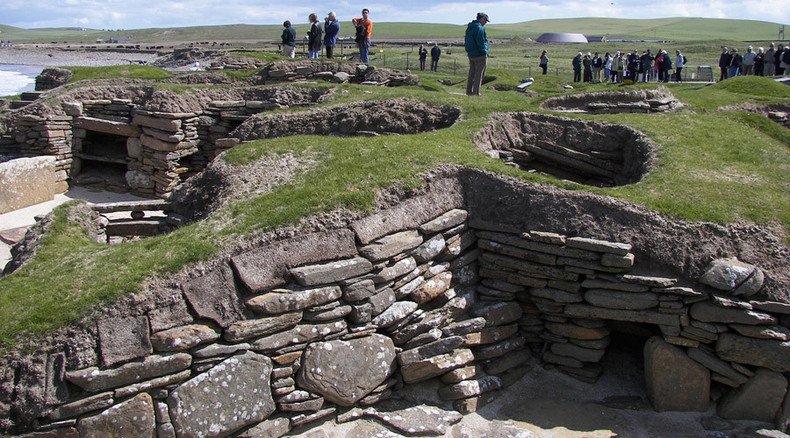5,000-yo rickets: Neolithic skeleton has earliest known case of bone disease

Evidence of rickets, a bone disease frequently associated with urban Victorian squalor, has been found in the body of a woman buried in the Hebrides 5,000 years ago, according to a new study.
Rickets is often caused by a lack of vitamin D from sunlight and certain foods, resulting in the calcifying and bowing of bones. Today it is among the most common childhood illnesses afflicting the developing world.
Professor Ian Armit, of the University of Bradford, told the Guardian: “It might be that she had some other illness that caused her community to confine her indoors, or she could have been a slave.”
READ MORE: ‘To dig or not to dig?’ Defy Shakespeare’s curse and exhume his bones, says scientist
“It’s also possible she wore a costume that covered her body, and this could have been because she held a religious role. But we will probably never know,” Armit said.
The body, which belonged to a woman aged 25-30, was uncovered in 1912 on a Scottish island. Fresh research was unveiled at the British Science Festival on Wednesday.
Report co-author Fiona Sharp noticed distinctive bone deformities while examining the body.
Given the woman lived by the sea, a source of vitamin D rich seafood, scientists found signs of the affliction surprising.
“They would have been a farming community, growing mainly barley and raising cattle and sheep,” Armit said.
“We don’t know why fishing stopped during the Neolithic period, but the people put their efforts into farming, which was obviously very labor-intensive.
“There may have been religious reasons or cultural taboos which meant eating fish had become a last resort for them.”
Full skeletons from the Neolithic era are very rare, with around ten known specimens in existence.
“We carried out radiocarbon tests but we didn’t believe the results, so we did the tests three times. Then we realized we were looking at a case of rickets that was 3,000 years earlier than any case seen before.”












